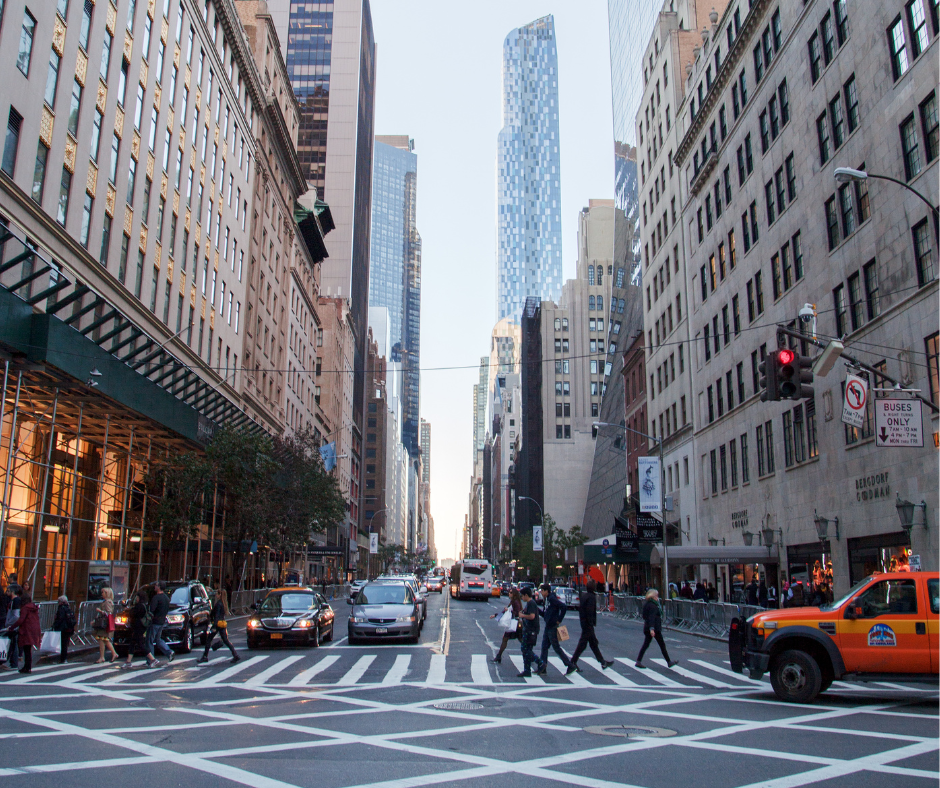The Run-Walk Strategy is a method of alternating between running and walking during a marathon, to reduce fatigue and improve endurance.
For the New York City Marathon, a typical Run-Walk strategy could involve running for a certain period, then walking for a shorter period, and repeating this pattern throughout the race. Following a run/walk strategy in the New York City Marathon has many benefits, it can be effective and result in you completing the marathon in your time goal… when executed correctly.
Runner and coach Jeff Galloway made the run-walk method or the “Jeff Galloway Method” popular in the 1970s.
The Run/walk method is a running strategy that involves incorporating planned walking breaks throughout your run.
It’s important to properly train using this strategy before race day…
In this article, we will cover…
- How To Implement a Run Walk Strategy In Your New York City Marathon Training
- Is It Ok To Run/ Walk The New York City Marathon?
- Effectiveness Of The Run Walk Method (Pros & Cons)
- New York City Marathon Run Walk Strategy
- Run Walk The New York City Marathon In Under 3.30 Hours
- Run Walk The New York City Marathon In Under 5 Hours
- Run Walk The New York City Marathon In Under 4 Hours
Let’s get started…

How To Implement a Run-Walk Strategy In Your New York City Marathon Training
The question you should be asking yourself is when and how you should start employing the run-walk strategy in your New York Marathon plan…
You do not need to practice the run-walk method in every single training run you go on. The most appropriate place to practice it is on your long runs. This is so that you can get into a rhythm.
The important thing about a run-walk strategy isn’t how much running you do versus how much walking you do, it’s about settling on a routine you’re comfortable with and need to implement from the get-go.
The method for most runners is to run for 3 minutes and walk for 1 minute but this can vary to a ratio like running 10km and walking for 1 minute.
The further back in the field you are, the more effective this method becomes… if you do it more often. I would recommend something along the lines of 1 to 2 minutes of walking every 3 to 6 kilometers or 2 to 4 miles and then of course you need to also factor in a bit of extra walking on the hills.
You must start these walk breaks from the beginning of your run/race and not only when you feel that you’re forced to walk. By then it’s too late to get the same benefits.
Hills are the second component to walking…
For very steep or very long hills I recommend sticking to 1 minute of running and 1 minute of walking… Or running 2 lamp posts, walking 1 lamp post… It just needs to be something you are comfortable with but it needs to feel like you have run far enough that you deserve a walk.
Keep in mind, that even when running up the hill, you still need to slow your pace down a bit to conserve energy

The whole point of those walks is that it’s supposed to keep you feeling fresh and your legs feeling good as long as possible so that your average speed over the long term improves.
The earlier in your training that you start practicing this, the more comfortable you’re going to get with it and it’s going to be easier to do at the New York City Marathon.
Concerning different terrains, you need to be flexible, and you need to be able to play it by ear. For example, when you get to a hill, but you’ve just had your walk break so now you assume you need to run the entire hill… It’s not going to work.
You need to break that hill up and take some extra walk breaks.
The flip side is also true with downhills…
You probably think to yourself that you don’t want to waste walk breaks down hills. The truth is that you must not be stubborn about that, to break the downhill up with a walk break is going to do wonders for your muscles and you won’t get to the bottom of the hill with tired legs.
The most important thing is always to try and have a short walk before you need it.
Luckily, the New York City Marathon is mostly flat, with small and gradual hills.
It has 810 feet of elevation gain and 824 feet of elevation loss from start to finish… meaning there will be some super fast times come race day.
A lot of runners feel insecure about following a run-walk strategy at big events like this one but there is nothing to be ashamed of… here’s why…
Is It Ok To Run/Walk The New York City Marathon?

The New York City Marathon does NOT disqualify participants for walking. It’s quite common to see runners following a run-walk strategy.
Sweep buses will follow the marathon route at a 6 1/2-hour marathon pace, roughly 15 minutes per mile/6.4 kilometers per hour after the final wave start.
The official end time of the race is 8:00 pm.
If you were to walk the entire route you would need to aim for a speed of between 14 – 15 minutes per mile; this is very achievable.
Support is provided for those marathoners who choose to walk the 26.2 miles, which means it’s more than alright to follow a run/walk method as you will have plenty of time left over and the cut-off time won’t even be something to worry about.
We know it’s possible, but how effective is the run-walk method on The New York City Marathon race day?
Effectiveness Of The Run Walk Method (Pros & Cons)
Pros of the run-walk method during the New York City Marathon:
- If you’re new to running then implementing a run/walk strategy will make you feel more in control of your race strategy and pacing strategy.
- Walking breaks are quick boosts of active recovery which help you feel less fatigued, help conserve energy, and allow your muscles to recover.
- Running-walking can make the marathon experience more enjoyable, as runners can take time to take in their surroundings, cheer for other runners, and enjoy the atmosphere of the race.
- Running has a high eccentric load on your muscles. By walking, you are reducing that eccentric load significantly and as a result, keeping the legs fresh for later in your race
- Counter-intuitive we know, but including talk sessions into your race strategy may help you achieve a faster marathon time. This is because walking helps you feel less fatigued and will leave you with sufficient energy reserves for the second half of the marathon to finish strong.
- Breaking up the race into smaller, manageable segments can make the marathon seem less daunting, leading to better mental endurance.
Cons of the run-walk method during the New York City Marathon:
- On race day… when you are surrounded by all the other runners, the supporters are shouting for you and the buzz is highly motivating… you’re “feeling it”, it’s a bit of a challenge to walk when you have planned to.
- It may be harder to maintain a consistent pace with the run-walk method, as the transition between running and walking can disrupt the rhythm.
- Some runners may feel like they are being overtaken by others who are running continuously, which can be a mental challenge.
As you can see, there are way more positives than negatives when implementing the run-walk strategy during the New York City Marathon.
Let’s have a look at how to implement the strategy on race day…
New York City Marathon Run Walk Strategy
Determine the length of your running and walking intervals based on your training and goals. A common run-walk ratio is 3 minutes of running followed by 1 minute of walking, but adjust the ratio based on what works best for you in your training

If your goal is to simply finish the New York City Marathon using this method you have a lot of options.
For example, to run a 10-minute mile you could train by running for 90 seconds and walking for 30 seconds.
Then you repeat this throughout the race.
You can also choose your run-walk ratio based on a mileage number… You could run for 1 mile and walk for 30 seconds.
We’ve put together the ultimate beginners’ New York City Training plan that might be of interest to you!
But, if you have a specific time goal in mind then…
Run Walk The New York City Marathon In Under 3:30 hours, 4 hours, and 5 Hours
Jeff Galloway advises runners aiming for a 3:30 marathon to run 4 minutes, and walk 30 seconds.
You could also run for 2 minutes and walk for 15 seconds.
For those runners wanting to achieve between a 5-hour and 6-hour New York City Marathon finish, they should run for 30 seconds and then walk for 30 seconds.
Or you could run for 15 seconds and walk for 15 seconds.
The optimal run-walk ratio for The New York City Marathon can vary depending on several factors, such as your current fitness level, and your running style.
If you are new to marathon running, or if you have a specific time goal in mind, it can be helpful to follow a training plan that incorporates specific run-walk intervals to help you achieve your goals.
Note: Running uses different muscles than walking does, so even if you can easily run a marathon distance, following the run-walk method is an entirely different story and that’s why you must practice this method in your training and your long runs.
It’s important to find what works best for you and to trust in your training and preparation.



Comments are closed.